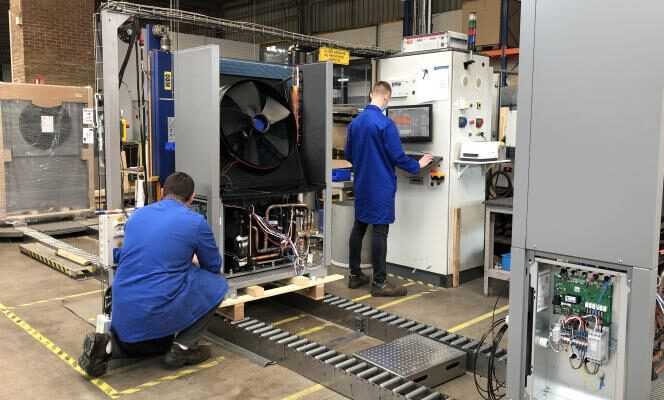Since the start of the year, the Auer factory in Feuquières-en-Vimeu, in the Somme, which produces heaters, has expanded its activity. The manufacture of enamelled steel tanks, intended to equip thermodynamic water heaters, which had taken the way to Serbia about fifteen years ago, has been relocated to this industrial site of 12,000 square meters, making it possible to hire a dozen more people, the workforce already numbering 150 people employed.
Certainly this relocation would not have been possible without the 800,000 euros in aid from the industrial investment acceleration fund in the regions, for a total investment of 2 million euros. But the economy is also buoyant: heat pumps, boilers, water heaters and other radiators “Are in line with today’s demand, in line with the energy transition: there are six million oil-fired boilers to be replaced in France”, specifies Philippe Dénécé, CEO of Auer.
Eighteen months after the arrival of Covid-19 in France and the economic recession that followed, activity is rather better than expected in most sectors. The economic indicators of the Banque de France, published Wednesday July 7, situate the activity down by only 2%, compared to the level before the crisis, instead of the expected decline of 3%.
And, contrary to what the Cassandra announced, employment did not collapse. It would even be quite the opposite. According to data from the Trendeo firm, between April and June, the French economy created 41,000 jobs, or 15% more than the quarterly average observed since 2009, or around 35,000 jobs. However, in the second quarter, the economy also destroyed 7,000 jobs. We therefore end up with a net balance of 34,000 jobs created during the quarter.
The redundancies were therefore strongly contained by the emergency measures taken during the health crisis (partial unemployment, loan guaranteed by the State, deferral of charges, long-term partial activity, etc.), to establish themselves at their lowest level since 2009.
Industrial employment is experiencing a slow resurrection
At the same time, insolvencies remain at a lower level than in 2019, and the number of jobs threatened by legal proceedings has fallen below the 20,000 threshold – twice less than in the second quarter of 2020, according to data released on Wednesday 7 July by the Altares firm. “We expected all the dust put under the carpet during the crisis to reappear”, decrypts David Cousquer, creator and manager of the firm Trendeo. “But, apart from the automotive sector which is doing badly, we do not deplore major accidents. Large companies are supported by a fairly abundant level of credit, and above all there is demand, order books are filling up. “
You have 64.78% of this article left to read. The rest is for subscribers only.
